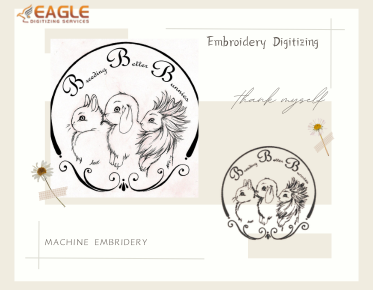Exploring the Application of AI in Embroidery Design: New Prospects for Innovative Design and Personalized Customization
The integration of Artificial Intelligence (AI) into embroidery design is revolutionizing the industry, offering unprecedented opportunities for innovation and personalization. As technology advances, the capabilities of embroidery digitizing are expanding, allowing designers to create intricate patterns with ease and precision.
The Evolution of Embroidery Design
Embroidery has a rich history, dating back thousands of years. Traditionally, it was a labor-intensive process, requiring skilled artisans to manually stitch designs onto fabric. However, the advent of embroidery machines and digitizing software has transformed this art form, making it more accessible and versatile. Today, AI is taking this transformation a step further by enabling more complex and personalized designs.
AI-Driven Design Innovation
AI technologies are enhancing the creative process in embroidery design by automating repetitive tasks and providing designers with powerful tools to experiment with new ideas. Machine learning algorithms can analyze vast amounts of design data to suggest patterns and color combinations that might not be immediately apparent to human designers. This capability not only speeds up the design process but also opens up new avenues for creativity.
Personalized Customization
One of the most exciting prospects of AI in embroidery is the ability to offer personalized customization at scale. With AI, designers can easily adapt designs to meet individual customer preferences, creating unique products that cater to specific tastes. This level of customization was previously only possible through manual adjustments, which were time-consuming and costly.
Technological Advancements in Embroidery Machines
Modern embroidery machines equipped with AI capabilities are becoming increasingly sophisticated. These machines can automatically adjust stitch density, thread tension, and other parameters to optimize the quality of the final product. Additionally, AI-powered machines can detect and correct errors in real-time, reducing waste and improving efficiency.
Embroidery Digitizing Software
The role of embroidery digitizing software is crucial in this technological evolution. These software solutions leverage AI to convert digital images into embroidery patterns, allowing for precise and detailed designs. The software can also simulate the final embroidered product, enabling designers to make adjustments before production begins.
Challenges and Considerations
Despite the many benefits, the integration of AI in embroidery design is not without challenges. Designers must navigate the complexities of AI algorithms and ensure that the technology complements their creative vision. Additionally, there is a learning curve associated with new software and machines, which can be a barrier for some professionals in the industry.
Future Trends in AI and Embroidery
Looking ahead, the future of AI in embroidery design is promising. As AI technology continues to evolve, we can expect even more sophisticated tools that enhance creativity and efficiency. The potential for AI to learn from human designers and improve over time suggests that the collaboration between humans and machines will become increasingly seamless.
In conclusion, the application of AI in embroidery design is opening up new prospects for innovative design and personalized customization. As the industry continues to embrace these technologies, companies like Eagle Digitizing excel in providing professional embroidery digitiing services, ensuring every design is crafted with unmatched precision. How will AI continue to shape the future of embroidery, and what new possibilities will it unlock for designers and consumers alike?



.png)